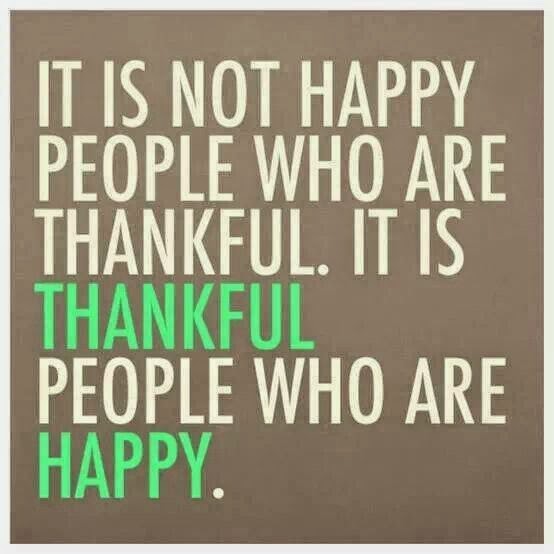[s2If current_user_cannot(access_s2member_ccap_course_004_hh)]
To view this lesson, please purchase this course or log in if you have already purchased it.[/s2If][s2If current_user_can(access_s2member_ccap_course_004_hh)]
What is Gratitude?
Gratitude practices basically rewire our brain to pay more attention to the feeling of gratitude, balancing out our negativity bias. A little daily gratitude list can change your brain chemistry. It’s like doing surgery on yourself, but in a really safe way.
What is gratitude? It’s more than just being thankful to someone else for helping you. A fairly recent review of gratitude research uses this definition: “Gratitude is part of a wider life orientation towards noticing and appreciating the positive in the world. This life orientation should be distinct from other emotions such as optimism, hope, and trust. Whilst these may involve life orientations, these would not characteristically be towards noticing and appreciating the positive in life, with, for example, optimism representing a life orientation towards expecting future outcomes, and hope incorporating this focus as well as tendency to see the pathways through which these positive outcomes can be reached.”
Evidence indicates that gratitude causes happiness, not just the other way around or a loose correlation. Gratitude can build resilience in people of all ages, and improves just about every other measure of well-being, too.
So that means this meme is scientifically verified. 🙂

And this one:

How to Express Gratitude
Here are some habits that can give you a chance to exercise your gratitude muscle.
Be creative, find a way that works for you. The key is to take time savoring little tiny (or big) unique events that evoke a feeling of gratitude in yourself.
- Gratitude Journal. This is a standard one. My spin on it is that I do it on my phone. I have a little text document and I put the date and then at least 3 things I’m grateful for. I try to picture the thing I’m grateful for and the feeling it evokes so that I can really remember it and combat the negativity bias.
- Gratitude Jar: I have a jar with a pad of paper beside it. When I’m home and happen to think of a gratitude (or get in a dark mood and want to pull myself out of it), I write out a little thing I’m thankful for. If you need encouragement, you could have a little snack jar right there, so you “pay” for your snack by writing a gratitude slip.
- Social Media: Express gratitude whenever you can, just make sure it’s really about expressing gratitude and not about making yourself look good for being gracious or having a lot of stuff. I have created a Gratitude Thread in our private Facebook group. Feel free to comment there any time you want.
- Gratitude Calendar: This is a spin on the gratitude journal. On each day in the calendar (on the wall or in your phone), write or draw 3 things you’re grateful for.
- Verbal Gratitudes: This is great for couples or parents/kids. Say three things you’re grateful for, back and forth. “Me-too” duplicates don’t count for your three.
- Pose the Question: During meditation, ask yourself, in the third-person voice, “Who or what are you grateful for?” Don’t try to answer it, just let answers flow up. It’s tempting to start using your conscious mind to reply. Just put the question out there and focus on your breathing. Feel free to simply repeat the question if your mind starts to wander. The idea is to plant the question in your psyche, NOT to start working on the answers. Having a continual attitude of looking for things to be grateful for is super helpful.
- Visual gratitudes: I’m no artist, but I found it especially fun to do little drawings of my daily gratitudes. This can be done on a calendar, on blank paper, on a marker board, or even on your wall! Another person I know took a photo every day of something she was grateful for, and posted it on her Instagram. Poetry, music, sculpture, dance, and any other art can be used to express gratitude.
- Just Say It: Just tell someone when you are grateful for something that they do. NVC statements are great for this, but a simple, “I’m so grateful that are here today, thank you!” is plenty. If no one’s around, you can still say it out loud. Works especially well if you have a spiritual recipient in mind, but you can also just talk to yourself.
On that note, I’ll express my gratitude here! Thanks for being in this course. I’m so grateful to be on this journey with you. We are never done learning these things. Teaching is one of the best ways to get new insights and I also appreciate having a community to explore these topics with.
Other Ways to Change Brain Chemistry
I felt really empowered when I learned that my activities, thoughts, and behaviors could change the chemistry of my brain. Gratitude is one useful, healthy way to change brain chemistry.
Our brains’ chemical makeup and response can be trained through our activities. Powerful choices include meditation, eating to nourish the brain and body, and activities that stimulate the vagus nerve.
I encourage you to read this additional article on the vagus nerve and PTSD, even if you (or your dog) don’t have PTSD, because we all have some experience with trauma.
Here’s another thing. Our minds affect our body language, but the reverse is also true. Check out this TED Talk about how 2 minutes a day of changing your posture can change your hormone levels and outlook.
[/s2If]